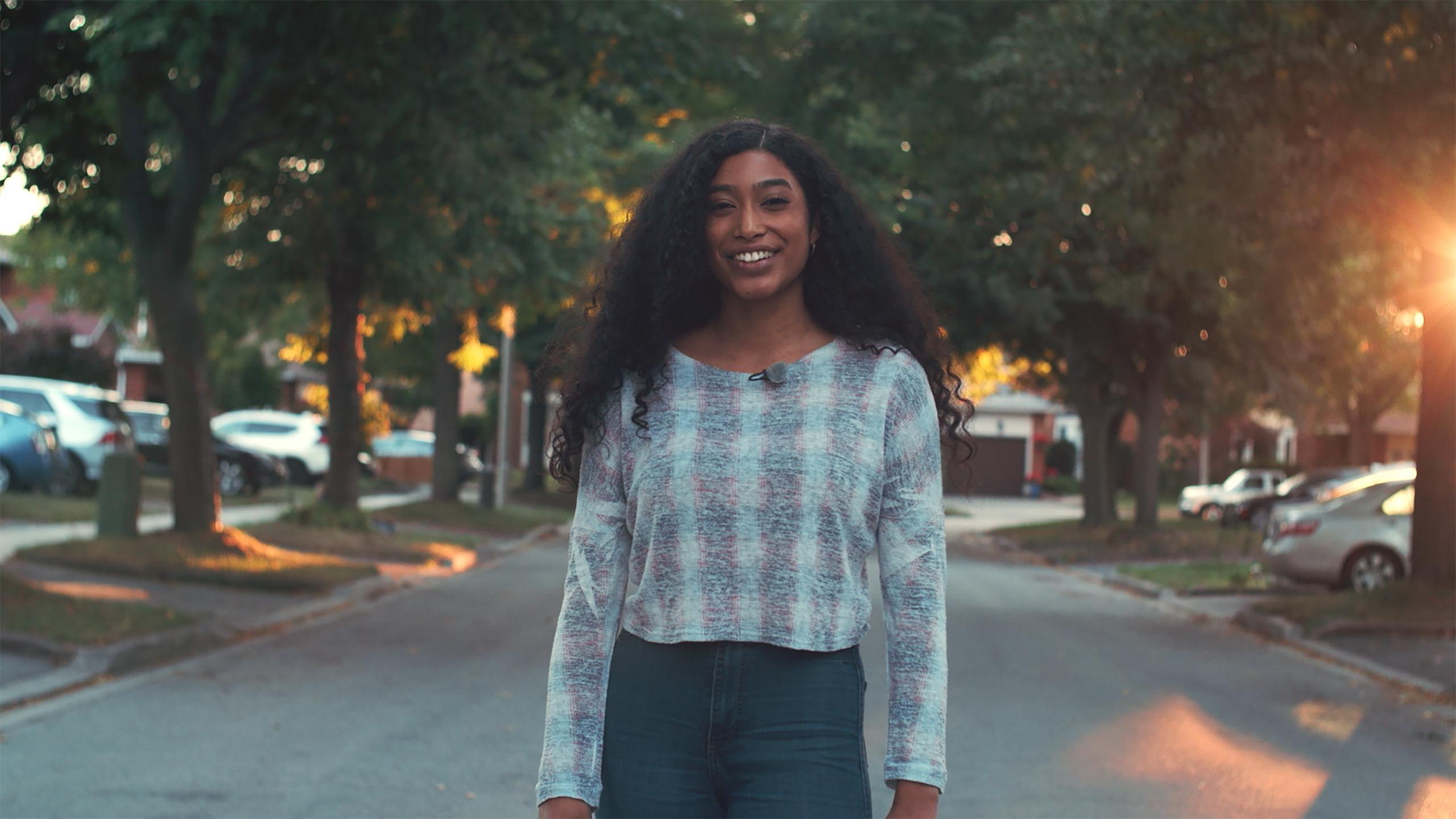By Ruby Asgedome
In August 2019, Taelor Lewis-Joseph posted in a Facebook group for film directors telling them about her idea: to create a narrative series about intersectionality and diversity in Toronto. The call-out led to Lewis-Joseph meeting her co-director, Amanda Ann-Min Wong, who voiced interest in the project.
While the original idea fell through, Lewis-Joseph, who is in her last year of Ryerson’s professional communications program, and Wong, who graduated from the School of Image Arts in 2016, eventually reconnected to create How T.O. Art, a docu-webseries showcasing the talents of four Toronto artists.
The show is hosted by actress Naja Stanford, who spends each day with a Toronto-based artist and takes a deep dive into their art form and lifestyle. Throughout the day, Stanford follows the artist, engaging in discussions about their personal lives while exploring and highlighting different parts of Toronto.
The show took months for Lewis-Joseph and Wong to finalize—they had to brainstorm and develop the idea, host interviews for artists and crew members, and secure grants to fund the project.
Their first step was to find local artists who were interested in being part of the show. “We already knew what we were looking for; we knew that we wanted women or non-binary folks. They also had to either be second or first-generation and from the GTA,” said Wong. Their goal was to encourage diversity and showcase Black, Indigenous and racialized artists who often face more barriers breaking into creative industries.
They focused the series on people who didn’t necessarily have the privilege to pursue their art full-time or faced adversity in their full-time artistry. “I think what’s really cool about the stories that we showed in [the show], is that everyone has something else going on too,” said Lewis-Joseph.
The directors received an influx of artists interested in showcasing their talents. “We held so many interviews, back to back,” said Wong. Although the overwhelming amount of interest was deeply appreciated, they knew their vision was to focus on women and non-binary people, and, unfortunately, had to turn some people down. By September 2020, Lewis-Joseph and Wong filmed a drag artist, dancer, singer and tattoo artist, creating four 15-minute episodes.
For Flora Tang, an urban development coordinator by day and drag performer by night, said How T.O. Art allowed them to grow “not as an artist but just as a person.” For the longest time, she had wanted to cut her hair, but was afraid of being visibly queer. After they saw Alex Tse, the director of photography, with their hair cut short, they decided to “frickin’ do it” as well, they said.
“All the connections that I’ve made through the series have been really important to me,” said Julia Saint-Amour, a tattoo artist who was featured in the show. “In the series, there’s just so much love.”
“We’re all like one big Rye family; it’s Rye High all over again”
In her episode, Saint-Amour opens up about her relationship with her family and art. She had to quit her first job and apprenticeship early in her career to be with her parents, who were both diagnosed with cancer.
Saint-Amour is now a tattoo and digital artist working in Toronto, and said she sees her art as an escape from her past traumas and hopes that her designs provide meaning and comfort for others as well. “When I started tattooing, the fact that I could help people through that, it blew my mind,” said Saint-Amour in her episode. “Sometimes people can see a lot deeper into my art, and I usually have that escapism.”
Her work combines retro themes, like the Tamagotchi, with a gory twist, and loves when her clients can relate to it. “When someone else is like, ‘Hey I connected with that when I was younger as well,’ There’s this weird instant bond with someone you’ve never met and then you meet up and then you’re just going to do the art on their body,” said Saint-Amour.
The team’s ability to build a family and a bond with one another was one of the greatest successes that came from the series, said Wong. After all, many crew members already knew each other from Ryerson, having attended the university at some point in their lives. “We’re all like one big Rye family; it’s Rye High all over again,” said Wong.
Filmed during the pandemic, Lewis-Joseph and Wong made sure to get everyone involved in the series tested to ensure their safety and comfort. They said they were grateful for the artists and team for being able to put together the project in spite of COVID-19.
“The crew and everyone was just so amazing that the whole behind-the-scenes experience was honestly incredible,” said Stanford.
The series premiered on Jan. 22 over Zoom, with an overflowing chat box of eager viewers who congratulated both Lewis-Joseph and Wong, as well as the artists.
“We had upwards of 120 people show up, not including us, who were already on the call,” said Lewis-Joseph. “We were expecting 50. Fifty people would’ve been enough for us,” she added.
Episode four was played at the event to give viewers a look into what they could expect from the series.
Both Lewis-Joseph and Wong hope, if granted the funding, they will be able to create more episodes in the series.
“This web series isn’t just like a web series, it’s more of a community and a collective, and wanting to support local,” said Lewis-Joseph.
The full series was released on Jan. 29.











Leave a Reply